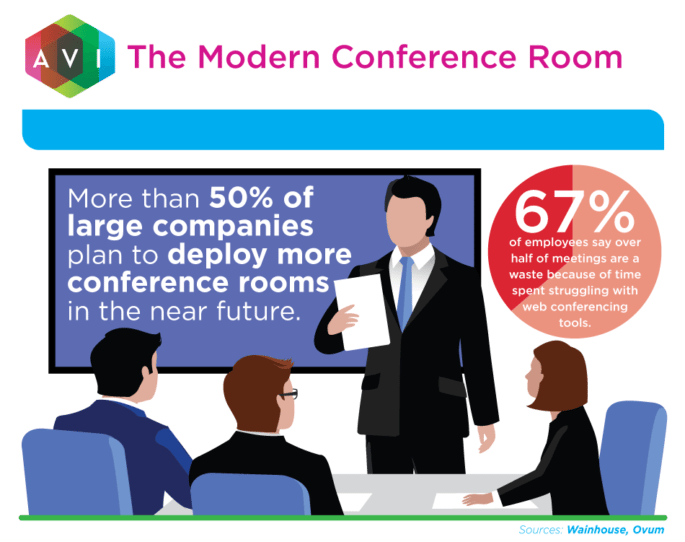Meetings can be challenging enough without running into technical errors with your conference room technology. You should only worry about sharing ideas, not whether everyone can hear and see all the information.
Aside from interfering with your collaboration goals, wasted time in meetings equals money down the tube. Multiply the time spent adjusting technology times the number of participants and their salaries, and lost meeting time can equal a real hit to the bottom line.

What Can Go Wrong
So what can go wrong when you don't have the right conference room technology?
Here are just a few things:
- The room you need is taken. In fact, you can’t find any room that has the equipment you need for your meeting.
- The audio is bad or doesn't work at all. If participants can’t hear, it hinders communication, which is the point of a meeting. But if it’s cutting out, everyone also gets annoyed and frustrated, and you risk information getting lost or misunderstood.
- You can't share content. You may end up emailing your presentation and just cross your fingers that everyone can follow along.
- Remote participants have trouble joining. Sometimes—after trying for several minutes—they give up and join on the telephone, but they can’t see what’s happening in your conference room.
- The video doesn't work. While you can still hold a meeting without video, you might lose out on presentation features, body language, and face-to-face communication.
There are other things that can go wrong like you can’t annotate content or the next group in the room can access your presentation. But when it’s your foundation, you risk not being able to collaborate at all.
How to Avoid These Conference Room Problems
All these problems can cost you anything from moderate amounts of time and frustration to loads of lost revenue. It pays to research the technology and equipment you need before making such an important decision.
Read this tech guide to learn more about how to choose the right solutions for your conference rooms.








